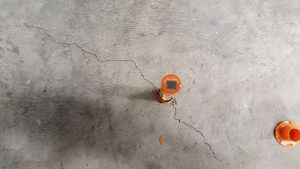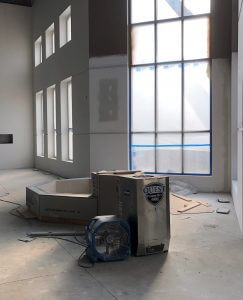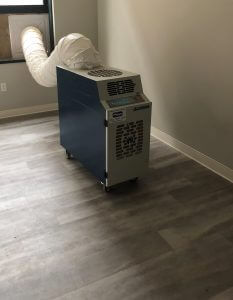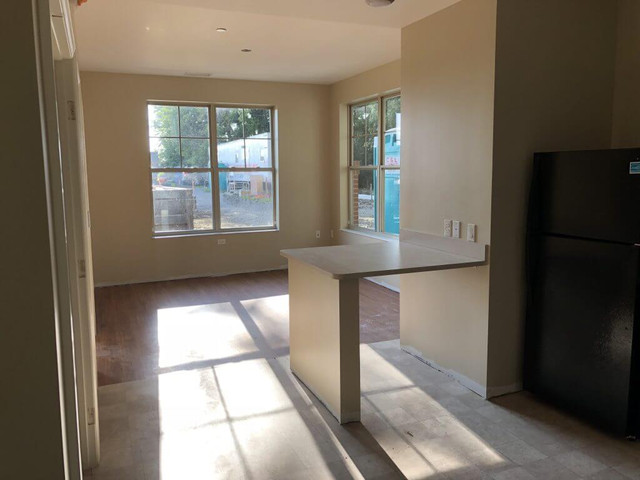Flooring Problems? Check Your Job-Site Climate
Posted by Matt Milos on Apr 26th 2019
I am willing to wager that if you are taking the time to read this article you have probably lost either time or money due to flooring issues or you know someone who has.
How contractors deal with unplanned events can make or break a project. The good news? Very few cases are truly irrecoverable. We're going to take a quick look at the two most common problem areas on sites today, like concrete moisture, and the impact of controlling the climate on your job site.

High moisture levels can make adhesive application impossible.
Almost everyone has experience the first: concrete moisture levels too high for flooring adhesive application.
It seems like more job sites suffer this problem now than in the past, but why? The simplest explanation is really two-fold.
First: 2009 Ohio EPA regulation changes.
These dictate that the solids content of all flooring cures and sealers must remain below 350 g/l. The trouble with low-solid sealers is they are less capable of holding back moisture than their predecessors. Further complicating matters, these same regulations created a move towards water-based flooring adhesives. These adhesives have a much lower tolerance to moisture. This combination of low-resistance and low-tolerance makes the likelihood of compatibility issues skyrocket.

Different regulations means different products, which in turn means different methods.
Second: the increasing speed at which most projects are now required to work. Shrinking schedules seldom leave time for the old 30 days of hydration.
And there you have it: either wait for the concrete to sufficiently dry or spend big on a mitigation system.

Nowadays many flooring products require specific, controlled conditions to work properly.
The second issue also has its roots in the 2009 regulations.
Modern flooring adhesives are not only more sensitive to moisture, they are also less resistant to ambient conditions. In years past few people thought about temperature and humidity on-site. The specific conditions needed to install solvent-based floor sealers and adhesives were no big concern. 10 years later? Well, if you haven't taken a look at flooring data sheets recently, you may be in for a surprise. The actual levels vary per manufacturer and product, but here are a few examples:
Armstrong Flooring - Maintain a minimum temperature in the spaces to receive the flooring and accessories of 65ºF (18ºC) and a maximum temperature of 100ºF (38ºC) - job site Relative Humidity shall be between 35% - 55%, not to exceed limits for optimum product performance
Mapei - Use only when substrate temperature is 50ºF and 90ºF (10ºC and 32ºC), and when ambient relative humidity is between 20% and 80%RH.
Tarkett - between 65°F (18.3°C) and 85°F (29.4°C) and the ambient relative humidity must be between 40% and 60%.
Henry - Acclimate the installation area, adhesive and flooring in an enclosed building at a minimum of 65°F (18°C) for at least 48 hours before, during, and for 48 hours after installation.

Without the right climate flooring products can misbehave.
The take away is that, to avoid delays, contractors have to maintain building climate.
Thankfully, by using dehumidification and temporary air conditioning you can do this for the fraction of the cost of a mitigation system. By establishing control of your building environment early on and maintaining proper RH levels, concrete can properly hydrate at a consistent rate that will help your schedule. A properly designed temporary solution will keep you well within the restrictions of your flooring products, allowing you to complete the schedule on your terms.


